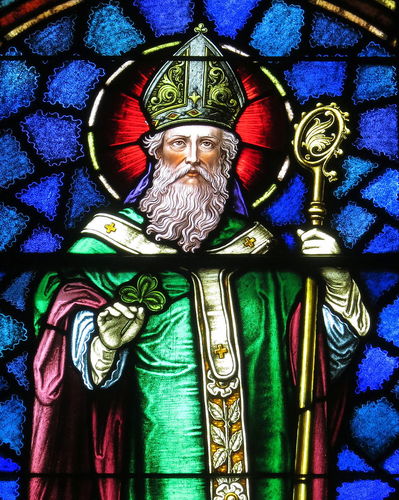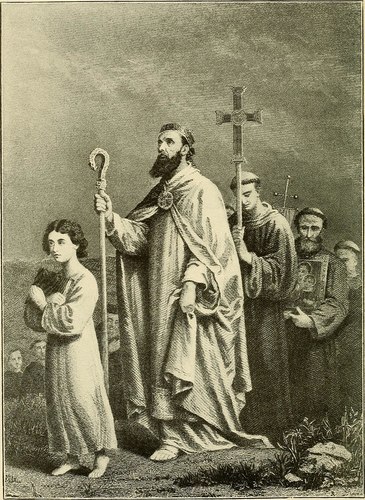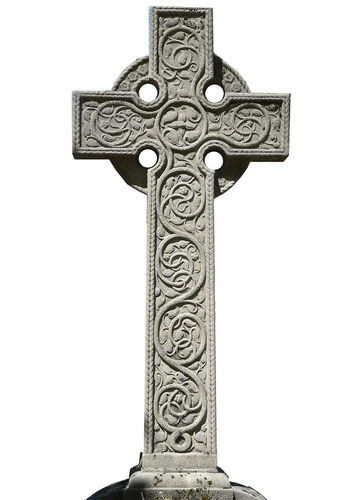Noiser
Who was Saint Patrick?
Play Short History Of... St Patrick
St. Patrick is one of the most well-known saints in the world. But despite the parades and raucous celebrations in his honour, little is known about his actual life. Here is everything you need to know about the real St. Patrick.

Born into privilege, sold into slavery.
St. Patrick was born in Roman Britain in the late fourth century AD. His father was a clergyman and a city counsellor, which meant Patrick was born into privilege, growing up on an estate near the town of Bannaventa Berniae. Even his name denotes his class, which Romanised is “Patricius” meaning “patrician” or “aristocrat.”
However, Patrick’s life of luxury came to a dramatic end when he turned 16. Irish raiders invaded his family estate and kidnapped the teen, transporting him to Ireland and making him a slave. There, he was forced to work as a shepherd and live in inhumane conditions. Alone and terrified, Patrick turned to his faith for comfort. According to his writings, six years into his captivity, he began having prophetic dreams in which he heard the voice of God. In one dream, God told him that he would soon be on his way home and that the ship that would take him there was ready. So Patrick decided to escape, knowing full well that if he was caught, he would be executed. He walked 200 miles to the Irish coast, where he was able to board a vessel headed to Britain.
The Voice of the Irish
 After his homecoming in Britain, Patrick allegedly had another prophetic vision in which an angel told him to return to Ireland as a missionary. Though he initially resisted the idea of going back to a people who had enslaved and abused him, he eventually relented and began training as a priest. After 15 years of study, he was ordained and embarked on his mission to convert the Irish people. But Patrick had his work cut out for him.
After his homecoming in Britain, Patrick allegedly had another prophetic vision in which an angel told him to return to Ireland as a missionary. Though he initially resisted the idea of going back to a people who had enslaved and abused him, he eventually relented and began training as a priest. After 15 years of study, he was ordained and embarked on his mission to convert the Irish people. But Patrick had his work cut out for him.
In Ireland, before Patrick got there, it was very much a part of the general Celtic religion, which had stretched all the way across Europe. They were polytheistic; they had many different gods, and it was overseen by a class of priests called the Druids. They acted as intermediaries; they acted as judges. It was a very religious society in many ways.
Philip Freeman, Professor of History at Pepperdine University and author of St Patrick of Ireland: A Biography
Patrick, however, had an advantage: after six years of living among the Irish people, he was deeply familiar with their language and culture and could incorporate both into his teachings. Instead of attempting to erase their Celtic beliefs, he was effectively able to meld them with Christian theology; for example, on Easter, he lit bonfires, as the Irish traditionally used fire to honour their gods. He also created the ‘Celtic cross'—a traditional cross superimposed with a disc representing pagan sun worship.

Legacy
Patrick is believed to have died around March 17th, 460 AD, after 30 years of missionary work. In the ensuing centuries, he became a mythical figure—one legend claims he cast all the snakes out of Ireland, another that he raised 33 people from the dead. But perhaps the most fantastical is that he was somehow able to convert all of Ireland during his lifetime.
When Patrick dies, Ireland is still very much pagan. The majority of the people are not Christians at all, and it's going to take 200 or 300 years before Christianity is really going to take over. The stories that came along later that said that Patrick came in and converted tens of thousands of people in mass gatherings, it didn't happen that way.
Philip Freeman, Professor of History at Pepperdine University and author of St Patrick of Ireland: A Biography
Regardless of whether they were true or not, these stories led to a push for Patrick to be recognised as the patron saint of Ireland. Today, mass celebrations are held the world over on St. Patrick’s feast day, but the grandiosity of these festivities is a fairly recent phenomenon.

St Patrick's Day, as we know it now, was actually not invented in Ireland at all. It was invented in Boston and Chicago and New York and Sydney, Australia, by Irish immigrants. So when the Irish immigrants came over to America, for example, in the 1800s, they were not treated well. They were the bottom of the social class. They really wanted something to rally around and so they began to hold these St Patrick's Day festivals.
Philip Freeman, Professor of History at Pepperdine University and author of St Patrick of Ireland: A Biography
Quite what Patrick himself—a man who suffered great deprivation and who preached total devotion to God—would make of all the raucous parades and green beer drunk in his name is anyone’s guess.